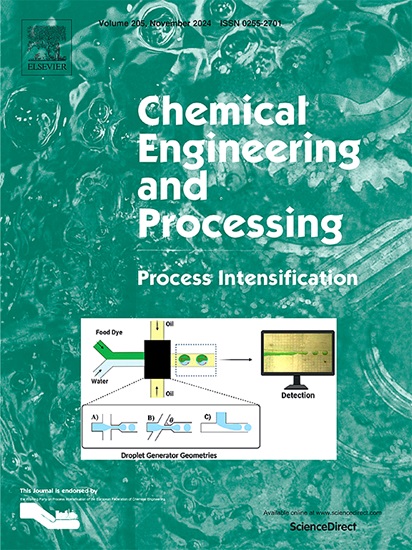Application of a novel hexagonal ultrasonic reactor for intensified crystallization of adipic acid
IF 3.8
3区 工程技术
Q3 ENERGY & FUELS
Chemical Engineering and Processing - Process Intensification
Pub Date : 2025-02-01
DOI:10.1016/j.cep.2024.110123
引用次数: 0
Abstract
Application of hexagonal ultrasonic reactor for improved crystallization of adipic acid was investigated with response surface methodology (RSM) based parameter optimization to obtain minimum particle size with possible narrow particle size distribution (PSD). Optimized settings were elucidated as 150 W ultrasonic power, 30 min as irradiation time, a duty cycle of 50 %, and an ultrasonic frequency of 22 kHz. The mechanism of particle size reduction under sonication was elucidated to be governed by cavitation-induced shear forces coupled with acoustic streaming and microjet formation. X-ray diffraction analysis indicated minimal structural changes following sonication, suggesting that the primary effect of ultrasound is on particle size modification rather than crystal lattice alteration. FTIR analysis also confirmed unchanged functional groups after the ultrasonic treatment and SEM images show smaller round crystals of adipic acid. Under the optimized ultrasonic conditions, the particle size decreased to approximately 37.4 % of that observed in conventional samples, with a significantly lower energy consumption of roughly 0.00208 kWh per gram of solids. Overall, intensification benefits of the ultrasound were demonstrated in terms of lower size of crystals with better morphology and no adverse effects on the crystal quality.

求助全文
约1分钟内获得全文
求助全文
来源期刊
CiteScore
7.80
自引率
9.30%
发文量
408
审稿时长
49 days
期刊介绍:
Chemical Engineering and Processing: Process Intensification is intended for practicing researchers in industry and academia, working in the field of Process Engineering and related to the subject of Process Intensification.Articles published in the Journal demonstrate how novel discoveries, developments and theories in the field of Process Engineering and in particular Process Intensification may be used for analysis and design of innovative equipment and processing methods with substantially improved sustainability, efficiency and environmental performance.

 求助内容:
求助内容: 应助结果提醒方式:
应助结果提醒方式:


